Who knew that Napa harbors a beautiful yet potentially lethal tree whose strange habits could satisfy Agatha Christie's search for the perfect murder weapon?
Fuller Park, a leafy oasis in this vibrant city, has long served as a gathering spot for family, friends, exercise buffs, and dog walkers, and it also showcases fascinating botanical treasures that attract locals and tourists alike.
But ominously towering over these shady groves stands a massive Mesozoic tree: the fabled bunya-bunya, whose occasional bounty of potato-like “nuts” belies its reputation as a killer tree. Falling pods weighing more than bowling balls have been known to dispatch unsuspecting victims, giving currency to the tree's troubling nickname, “the Widowmaker.”
Situated in the Napa Abajo Historic District, Fuller Park was purchased and developed by the City beginning in 1905. Local planners, as was common at the time, followed a global obsession to create tree “zoos” from public parks by planting unusual saplings from around the world.
Today, Napa County Master Gardeners conduct regular tours of the park highlighting these legacy trees, including giant sequoias, unusual varieties of oaks, maples and cedars, and even the extremely rare dawn redwood. But the tree that arguably ignites the most interest is the bunya-bunya pine located near the park's Seminary Street border.
Araucaria bidwillii, commonly known as the bunya pine or bunya-bunya is a large evergreen coniferous tree in the Araucariaceae family. Native to Australia, it can exceed 50 feet in height.
The bunya tree was (and in some parts still is) of immense cultural significance to the Australasian Aboriginal peoples. Whenever trees produced their irregular harvest—approximately every three years—clans would gather to celebrate. While feasting on the nuts, they would take the opportunity to perform tribal ceremonies, renew family ties, and settle legal matters.
Notwithstanding its value as a food source, the bunya pine was ultimately selected by early Fuller Park planters for its mysterious beauty and adaptability to Napa's climate.
Many trees have an undesirable feature or two, so it's important to do your research before planting any tree indiscriminately. In late 2022, mature cones started to drop from the Fuller Park bunya pine, prompting officials to fence off the entire area for several weeks due to the potential for injury.
Even the tree's fallen razor-sharp branches warn visitors not to get too close. Fortunately, park staff protect the public from accessing this tree at its murderous peak.
Passing by the park one afternoon during bunya “season,” I happened to spot a fresh green cone near the fence. I was able to safely carry the 16-pound oddity home, not sure what I would do with it.
There's a YouTube video on even the most obscure subjects, but I was nevertheless surprised at the number of videos relating to bunya harvesting, preparation, and cooking. Most of these videos originate in Australia or New Zealand and demonstrate unique ways to process the bunya pods. Typically, the task involves extracting 100 or so nuts from each fleshy cone, boiling the nuts, and then shelling each with a sharp knife.
The flesh tastes like a firm, nutty potato. It can be sautéed in oil with garlic, or eaten like gnocchi with pesto. Some folks (apparently those with a great deal of spare time) even grind the seed into flour for pancakes, pasta, or shortbread.
Armed with a fascination for the bunya, as well as a sense of foreboding connected with the tree's dark side, I was stunned to discover during a recent trip to Chile that Santa Rita's Casa Real driveway was lined with more than 50 mature bunya pines. I felt it my duty to ask hotel officials how they manage falling-pod tragedies, which met with puzzled expressions accompanied by the rolling of eyes.
Although the Chilean bunya closely resembles the Australasian version, I soon learned that the pods from this distant relative grow in a cluster, and each relatively harmless pod gets no bigger than a small artichoke. This Chilean pine, from the same Araucaria family, is likewise a living fossil and serves as Chile's national tree, but it does not aspire to the diabolical reputation of our Napa/Australasian specimen.
Fuller Park's bunya pine deserves reverence and respect, but please exercise caution during harvest season. And if you love this tree and feel the urge to plant one in your yard, you might want to consider the Chilean version as a safer alternative.
As a side note for would-be mystery writers, I discovered that the bunya pine does not necessarily take top prize as the most lethal tree. That honor may belong to the California Coulter pine which weighs in at a svelte 11 pounds. However, its sharp talon-like scales apparently inflict considerable collateral damage. But that's a subject for another column.
Gardening with the Masters: Join UC Master Gardeners of Napa County and Ole Health for a hands-on workshop on “Preparing for Spring Vegetable Gardens” on Saturday, March 18, from 10 a.m. to noon, at Ole Health, 300 Hartle Court, Napa. Class size is limited so please register at https://www.olehealth.org/our-services/community-outreach-resources.
Workshop: Join UC Master Gardeners of Napa County for a workshop on “Lawnlessness: Think Beyond Turf” on Saturday, March 25, from 10 am to noon, at Las Flores Community Center, 4300 Linda Vista Avenue, Napa. Learn about lawn alternatives that are attractive, drought tolerant, and low maintenance, and that help mitigate climate change. The workshop will be indoors, but dress warmly and be prepared for some outdoor activities, weather permitting.
Registration required: https://surveys.ucanr.edu/survey.cfm?surveynumber=39854
Workshop: Join UC Master Gardeners of Napa County for a “Backyard Compost Workshop” on Sunday, March 26, from 10 a.m. to noon at Hagafen Winery, 4160 Silverado Trail, Napa. Learn about hot composting, cool composting, and worm composting. At the conclusion of the workshop, you may purchase a discounted compost bin for $20 (one per household). Register here.
Help Desk: The Master Gardener Help Desk is available to answer your garden questions on Mondays and Fridays from 10 a.m. until 1 p.m. at the University of California Cooperative Extension Office, 1710 Soscol Avenue, Suite 4, Napa. Or send your questions to mastergardeners@countyofnapa.org. Include your name, address, phone number, and a brief description of the problem. For best results, attach a photo of the plant. You may also leave a voicemail message with the same information at 707-253-4143.
References:
UCANR Napa County
https://napamg.ucanr.edu/Fuller_Park_Tree_Walk/24/
https://ucanr.edu/blogs/blogcore/postdetail.cfm?postnum=22593&postnum=22593
https://plants.ces.ncsu.edu/plants/araucaria-araucana/
UC Master Gardeners of Napa County weekly column: In Honor of Arbor Day, Trees at Fuller Park, Napa.Author: Melody Kendall, UC Master Gardener of Napa County Published on: October 24, 2017
https://www.youtube.com/watch?v=G0f6XNMDb64c
Attached Images:
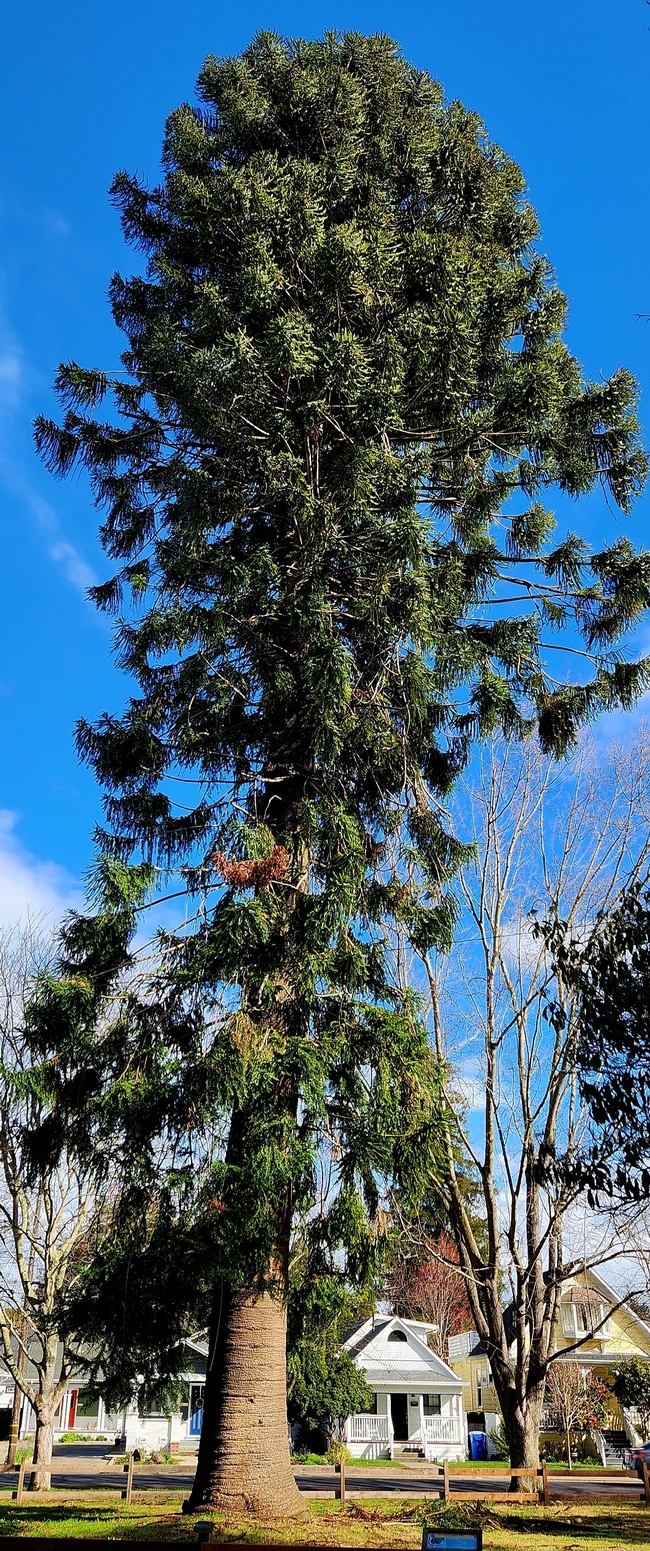
Bunya-Bunya Fuller Park Napa (Tom Hixson UC MG NC)
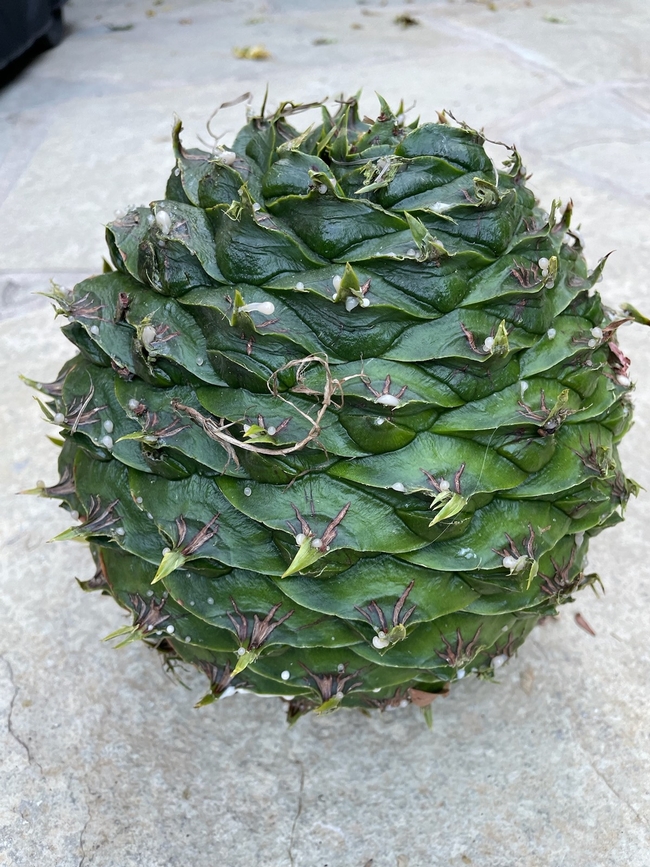
Bunya-Bunya Nut Fuller Park, Napa (Tom Hixson UC MG NC)
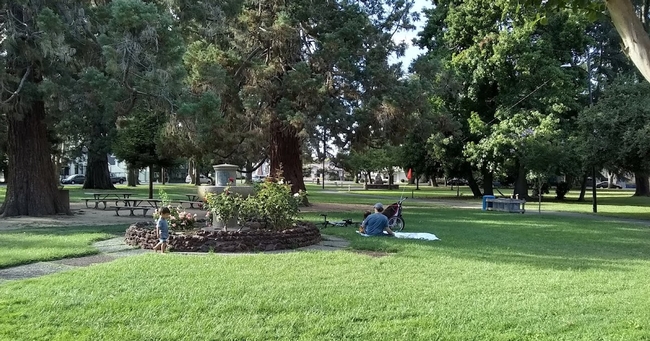
Fuller Park Chase (napavalleygo.blogspot.com)
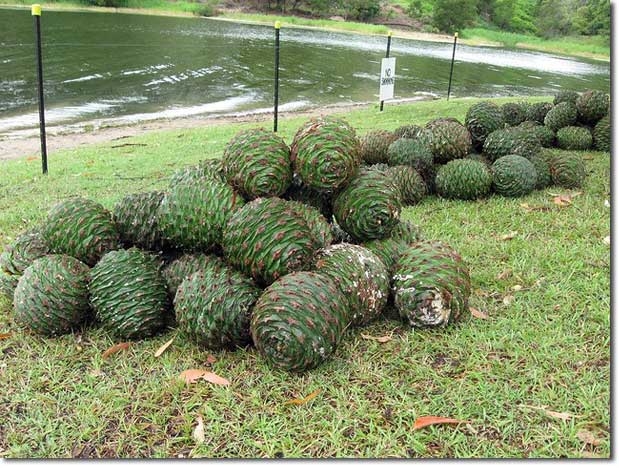
The Bunya-Bunya Pine (Araucaria bidwillii) (permaculturenews.org)
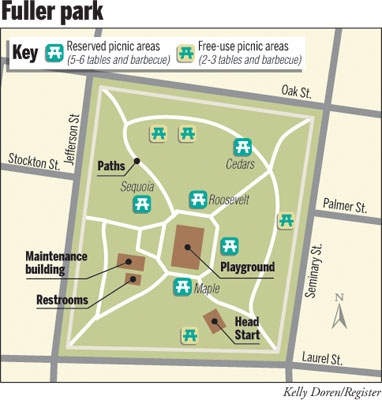
Napa County Landmarks' tour offers a new look at Fuller Park (napavalleyregister.com)